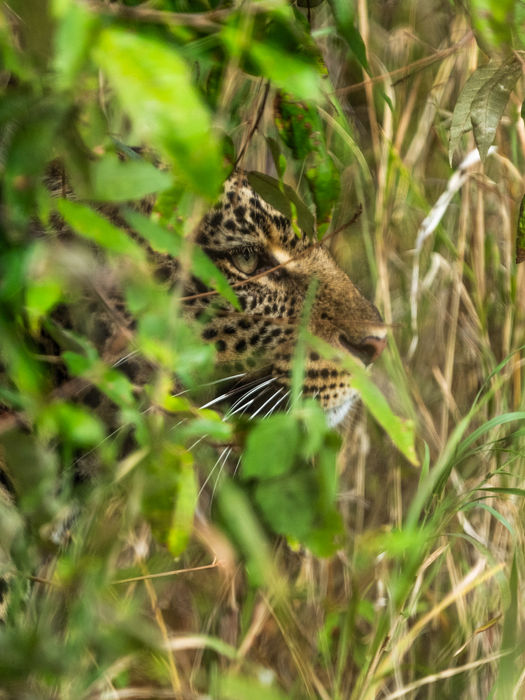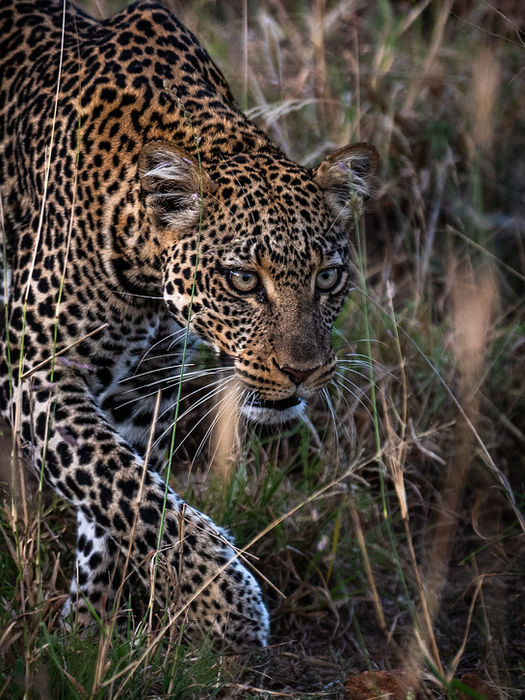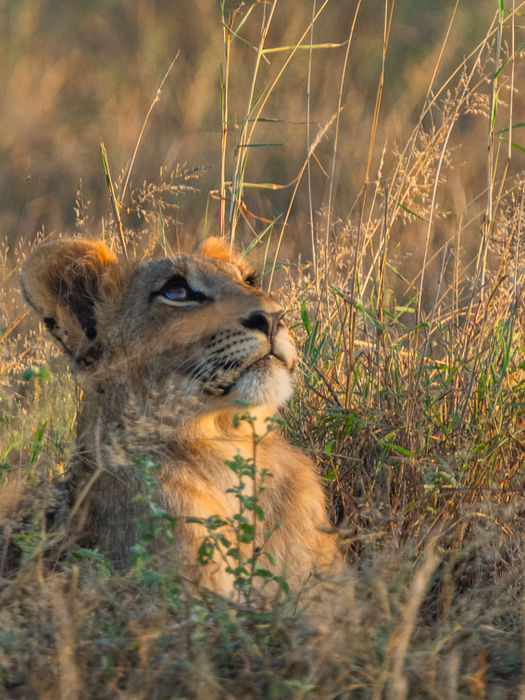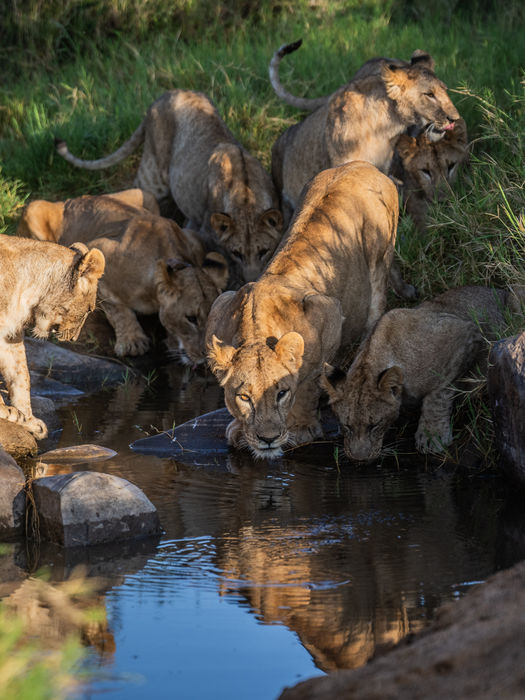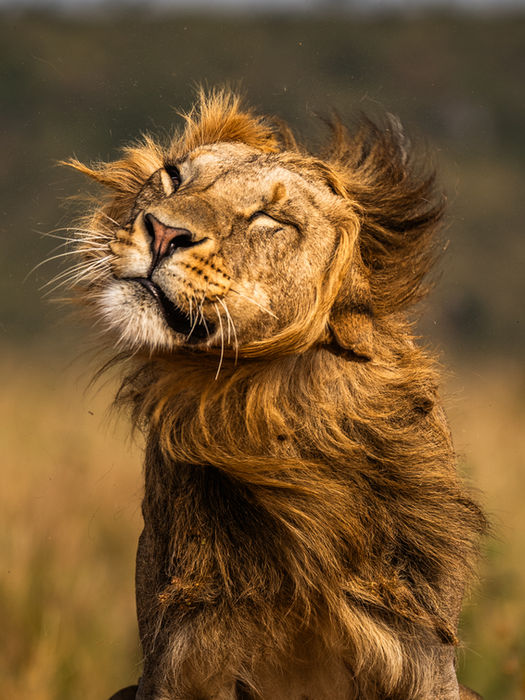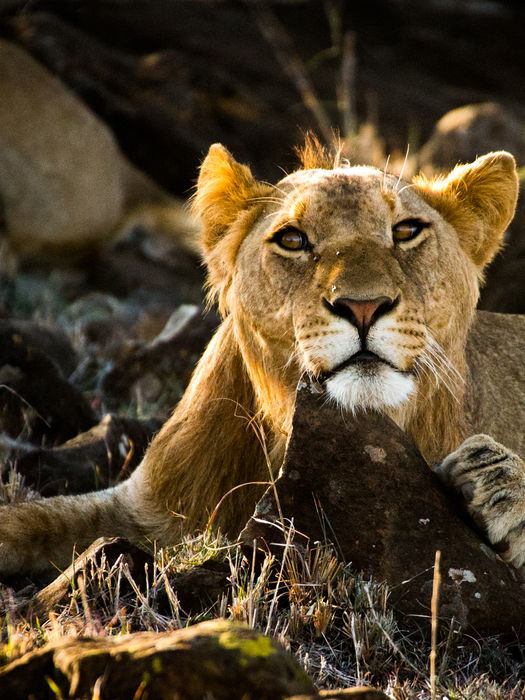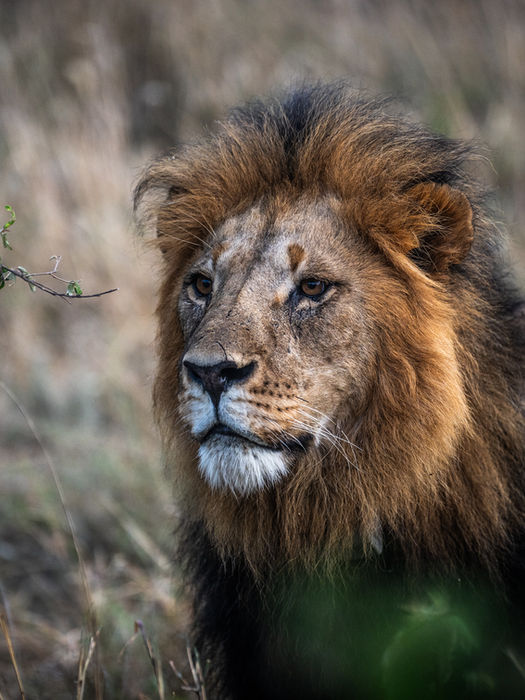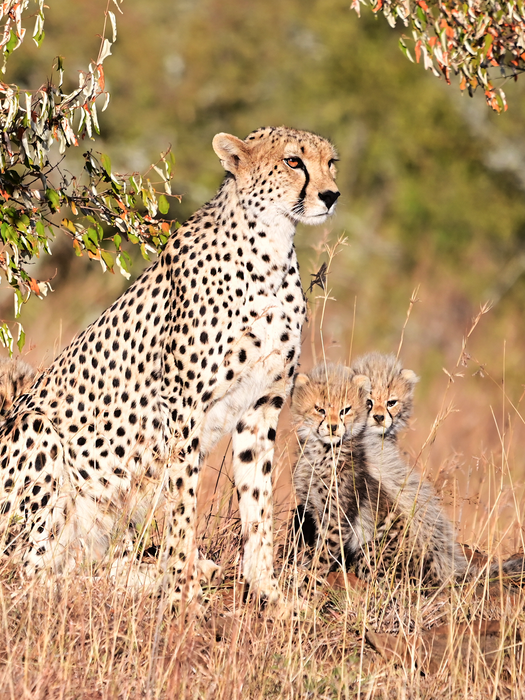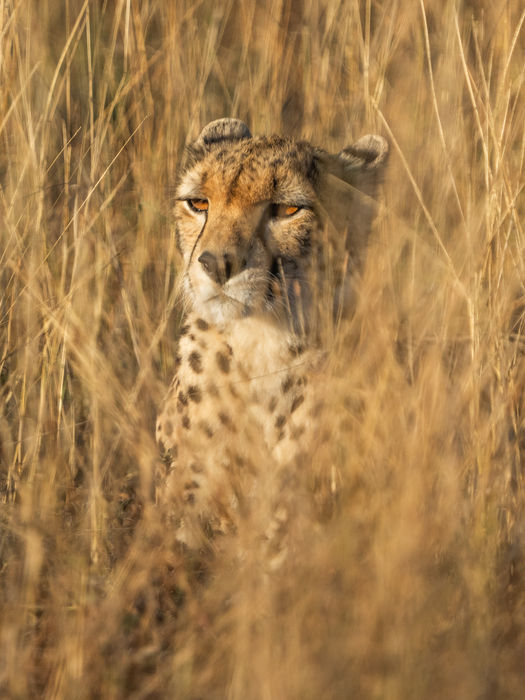
Big Cats
Loisaba Conservancy is home to some of Africa’s most iconic predators, including lions, leopards, and cheetahs. These magnificent big cats play a crucial role in maintaining the ecological balance within our landscape, serving as apex predators that regulate prey populations and contribute to the overall health of the ecosystem.
At Loisaba, we are committed to the conservation and study of these species, recognising the challenges they face due to habitat loss, human-wildlife conflict, and declining prey numbers. Through a combination of rigorous scientific research, innovative conservation practices, and collaboration with local communities and global partners, we strive to ensure that lions, leopards, and cheetahs not only survive but thrive in this vital landscape.
Our efforts include tracking and monitoring these big cats to better understand their movements, behaviours, and interactions with their environment. By gathering this critical data, we can implement targeted conservation strategies that mitigate threats and promote coexistence between these predators and the people who share their habitat. Loisaba's commitment to big cat conservation is integral to our broader mission of preserving the rich biodiversity of northern Kenya for future generations.
Leopards
Leopards are one of the most elusive and adaptable big cats in Africa, and Loisaba Conservancy is home to a stable and thriving population. Among these remarkable creatures is the rare black leopard, whose presence has attracted significant attention from the scientific community and wildlife enthusiasts alike. At Loisaba, we are dedicated to ensuring that this iconic species continues to thrive in its natural habitat.
The presence of a healthy leopard population at Loisaba is a testament to our commitment to preserving biodiversity and protecting the natural ecosystems that are vital for their survival. Through ongoing research and conservation initiatives, we continue to contribute to the global understanding of leopards, particularly the rare black leopard, and work towards securing their future in the wild.
Our leopard research, conducted in collaboration with the San Diego Zoo Wildlife Alliance (SDZWA), focuses on understanding the ecology, population dynamics, and the challenges posed by human-wildlife conflict. By studying these aspects, we aim to develop effective strategies to mitigate conflicts between leopards and local communities, ensuring that both wildlife and people can coexist harmoniously.
This research includes tracking and monitoring leopards across the conservancy to gather data on their movements, behaviour, and interactions with other species. A key part of this work is Uhifadhi Wa Chui, an important leopard conservation and research programme in partnership with SDZWA. Through this initiative, leopard collaring has been introduced to provide detailed insights into movement patterns, habitat use, and interactions with communities and livestock. This information is crucial in informing our conservation efforts and in promoting a deeper understanding of these magnificent animals, while also supporting long-term coexistence between people and wildlife.
Through this programme, researchers at Loisaba are working to collar up to 25 adult leopards across Laikipia, Isiolo and Samburu counties. Collaring provides vital insights into leopard movement patterns, habitat use, and interactions with communities and livestock. These data are essential for developing informed strategies to reduce human-wildlife conflict, particularly in areas where leopards are often blamed for livestock losses.
The project is conducted under strict ethical and safety protocols, with capture operations led by Kenya Wildlife Service (KWS) veterinarians. Leopards are captured at night using humane cage traps that are carefully monitored, and all non-target species are immediately and safely released. The team specifically targets adult males and females without cubs to avoid disturbing dependent young and do not deploy collars on subadults that are still growing.
Once collared, leopards are tracked via GPS satellites, enabling researchers to monitor their movements in near real-time and study key behaviours, particularly when they enter into community landscapes where they pose a threat to livestock and are in return threatened by retaliatory actions. This information helps us understand how leopards navigate landscapes shared with people and how we can support safer coexistence.
Loisaba’s leopard conservation work prioritises community engagement. By involving local communities in conflict reporting networks, livestock protection programmes, and conservation education, we aim to foster an environment where leopards and people can thrive together. Collars will provide further information on how deterrents and fortifications recently installed around livestock bomas are influencing leopard behaviour, as well as allow researchers to test new solutions to reduce conflict.
This research is made possible through close collaboration with KWS, WRTI, NACOSTI, and the Loisaba community, and it reflects our commitment to science-led conservation that protects wildlife while supporting local livelihoods.
Lions
Lions are a vital component of the ecosystem and a key focus of our conservation efforts. As apex predators, lions play a crucial role in maintaining the balance of the environment. By regulating herbivore populations, they prevent overgrazing and maintain the diversity of the landscape. Their predation on weaker members of prey species also helps keep these populations healthy and robust.
Unfortunately, lions face significant challenges due to the growing human population. As human settlements expand, lion habitats are increasingly fragmented and diminished, forcing these majestic predators into closer contact with people. This proximity heightens the risk of human-wildlife conflict, often leading to the retaliatory killing of lions when they prey on livestock. This ongoing encroachment on their natural habitats and the resulting conflicts pose a serious threat to the survival of lion populations.
In collaboration with Lion Landscapes, our lion research focuses on collaring and tracking lions across the conservancy. These GPS collars provide invaluable data on lion movements, territorial ranges, and behaviours, enabling us to better understand their ecology and interactions with other wildlife and humans. This data is essential in designing effective strategies to mitigate human-wildlife conflict, such as developing early warning systems for local communities when lions are near livestock areas.
Lion Landscape’s "Collaring for Coexistence" initiative is a key component of this research. By monitoring lion movements in real-time, we can work closely with local pastoralists to prevent livestock losses and reduce retaliatory killings of lions. This collaborative approach not only helps protect lions but also fosters a positive relationship between wildlife conservation and the local communities who share the landscape with these predators.
Not all lions are collared, so how does Lion Landscapes choose which ones to collar? There are three primary reasons for collaring specific lions:
1. Monitoring Prides
Lions are unique among big cats because they are social animals, living in groups called prides. A pride typically consists of related females—mothers, daughters, sisters—and one or more adult breeding males. Young males are eventually pushed out of the pride when they reach sexual maturity, which helps maintain genetic diversity in the species. Lion Landscapes prioritises collaring the oldest lioness in each distinct pride. This allows them to monitor the pride's movements and inform livestock owners when the pride is nearing bomas (enclosures where cattle are kept at night). The most mature female is often the pride's leader and, as she ages, may be more likely to become a "problem" lion, targeting livestock rather than wild prey.
2. Monitoring Young Males
When young males leave their maternal prides, they are not yet strong or experienced enough to challenge older males for control of a pride. In avoiding territories dominated by more powerful males, they often venture into areas with less prey and more human activity, putting them at greater risk of conflict with people.
3. Monitoring "Problem" Lions
Occasionally, certain lions begin to consistently target livestock instead of wild prey, becoming "problem" lions. These are typically older or weaker individuals who struggle to hunt more challenging wild prey, finding livestock to be an easier target. To manage these cases, these lions are collared and closely monitored, with their locations regularly communicated to livestock owners. This helps keep the owners vigilant and prepared to protect their livestock. Research indicates that if lions repeatedly fail in their attempts to hunt livestock, they are less likely to continue targeting them and may eventually revert to hunting wild prey.
For more information about our collaboration with Lion Landscapes and our efforts to protect lions at Loisaba, please visit www.lionlandscapes.com.
Cheetahs
Cheetahs at Loisaba Conservancy
Cheetahs, the world’s fastest land animals, are a symbol of grace and speed in the wild. At Loisaba Conservancy, we are committed to the protection and conservation of these magnificent predators, whose populations are increasingly threatened across Africa. Our efforts are focused on understanding their behaviour, ecology, and interactions with the landscape, as well as ensuring their long-term survival in the region.
The Importance of Cheetahs
Cheetahs play a vital role in maintaining the balance of ecosystems by controlling the populations of their prey, primarily medium-sized ungulates. Their unique hunting style, which relies on bursts of incredible speed rather than strength or stealth, sets them apart from other big cats. However, cheetahs are also one of the most vulnerable species, with fewer than 7,000 individuals remaining in the wild. Habitat loss, human-wildlife conflict, and competition with other predators pose significant threats to their survival.
Cheetah Conservation at Loisaba
Loisaba Conservancy is home to a stable population of cheetahs, thanks to our robust conservation strategies and collaborative efforts with local communities and conservation partners. By maintaining large, open areas that are essential for cheetah hunting and movement, we provide a sanctuary where these animals can thrive.
Our work includes:
-
Monitoring and Research: We use camera traps and field surveys to monitor cheetah populations, track their movements, and understand their behaviour. This data helps us to assess the health of the cheetah population and make informed decisions to enhance their conservation.
-
Habitat Management: We ensure that Loisaba’s landscape remains conducive to cheetah survival by maintaining open grasslands and reducing human disturbances. Our habitat management practices also focus on minimizing competition with other predators and ensuring sufficient prey availability.
-
Community Engagement: As with all our conservation efforts, working with the local communities is crucial. We engage with pastoralists and other land users to mitigate human-wildlife conflict, particularly in areas where livestock might come into contact with cheetahs. Education and outreach programmes help foster coexistence and reduce the risk of retaliatory killings.
-
Collaboration with Conservation Partners: Our work with organisations like the San Diego Zoo Wildlife Alliance and other wildlife conservation bodies supports research into cheetah ecology, population dynamics, and the broader impacts of human-wildlife conflict.
The Future of Cheetahs at Loisaba
Loisaba’s commitment to cheetah conservation is part of our broader goal to protect and restore the region's biodiversity. By combining research, habitat management, and community involvement, we aim to secure a future where cheetahs and other wildlife can flourish. Visitors to Loisaba have the unique opportunity to witness these incredible animals in their natural habitat and become part of their conservation story. Through continued efforts, we hope to contribute to the global fight to save the cheetah from extinction and ensure they remain an iconic presence in the African wilderness.

